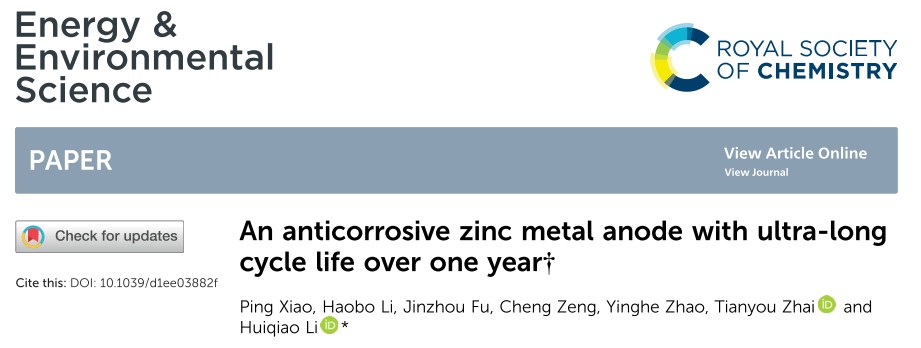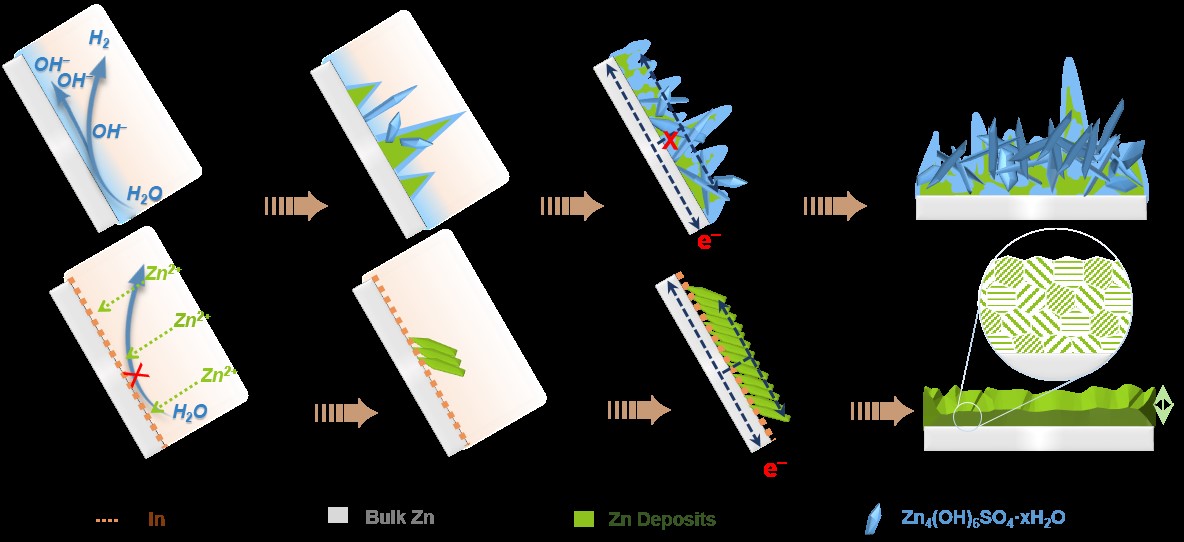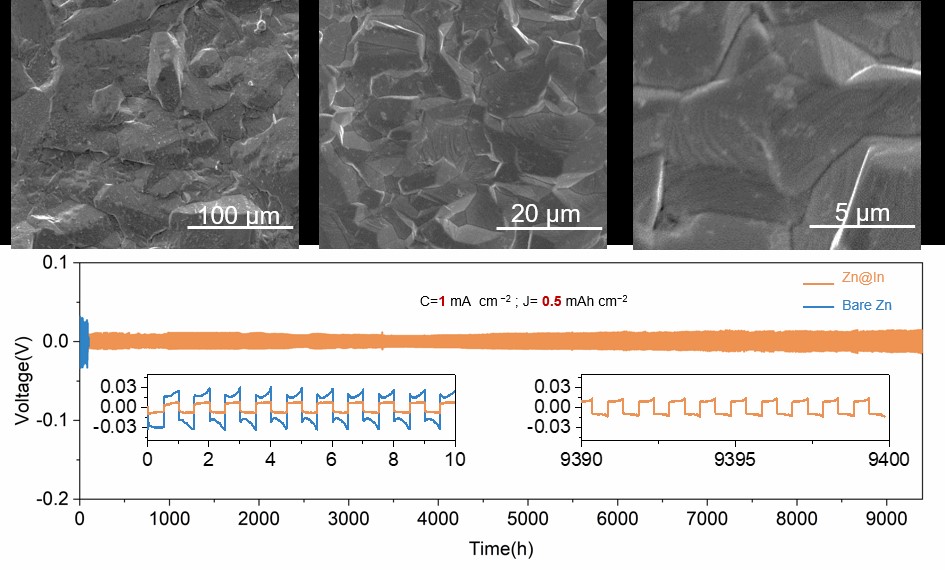On March 17th, a research paper titled “An anticorrosive zinc metal anode with ultra-long cycle life over one year” was published online in Energy & Environmental Science, which was carried out by Professor Li Huiqiao’s group under the School of Materials Science and Engineering. The influence way of hydrogen evolution reaction (HER) towards the deposition morphology of zinc was figured out in this paper. The occurrence of HER could induce the formation of zinc hydroxide sulfate hydrate and then passivate the surface of the deposited zinc, so that the epitaxial growth between zinc flakes and zinc flakes cannot be performed, resulting in a loose morphology of the deposited zinc. By effectively inhibiting HER, the boosted performance of zinc anodes has been achieved with ultra-dense zinc deposition morphology. The cycle life of zinc anodes has been successfully improved from less than 1000 h reported so far to more than 9000 h, showing a stable cycle of more than one year.

Metal Zn, similar to the status of lithium in organic batteries, has a dominant position in aqueous batteries due to its high theoretical capacity (5855 mAh cm-3, 820 mAh g-1) and quite low redox potential (-0.76 V vs. the standard hydrogen electrode) as the anode. Unfortunately, the Zn anode faces challenges of poor stability and short-lived cycling performance, which restricts the development of Zn-based batteries.

Figure 1. Schematic illustration of Zn deposition morphology evolution before and after indium modification
To solve these problems, Professor Li Huiqiao under the School of Materials Science and Engineering thought that compared with the apparent dendrite issue, Zn anodes suffer an additional threat from the competition of HER throughout the electrochemical process, which seems to be an inevitable problem for all aqueous battery systems. The devastation way of HER to the performance of Zn anode has not been figured out and received enough attention. Therefore, they modified the Zn anode with metal indium, which has higher hydrogen evolution overpotential than Zn, greatly extending the cycling life of Zn anode by suppressing HER. On the one hand, the inhibition of HER stabilizes the interfacial pH and reduces the formation and deposition of inert zinc hydroxide sulfate hydrate, allowing the surface of the deposited zinc clean. Thus, the subsequently deposited zinc can epitaxially grow on the surface, contributing to the ultra-dense structure of zinc; on the other hand, this ultra-dense rock-like structure reduces the volume change, greatly prolongs the working life, and improves the cycle stability of Zn anode. Therefore, the assembled symmetric battery can achieve an ultra-long cycle life of more than one year. This work reveals the intrinsic link between the inhibition of HER and the densified zinc deposition and verifies the effectiveness of inhibiting HER for improving the performance of zinc anodes, which has important guiding significance for the subsequent development of zinc anodes.

Figure 2. The dense top-view morphology of deposited Zn layer and the long-term galvanostatic cycling performance of Zn||Zn symmetric cells
The work was supported by the National Natural Science Foundation of China, the Hubei Provincial Natural Science Foundation of China, the National Key Research, Development Program of China, and the Fundamental Research Funds for the Central University. Professor Li Huiqiao of HUST is the corresponding author. Doctoral student Xiao Ping of HUST is the first author. Meanwhile, Professor Zhai Tianyou and Professor Zhao Yinghe of HUST also participated in this research work.
Paper link: https://pubs.rsc.org/en/content/articlelanding/2022/EE/D1EE03882F
Source: School of Materials Science and Engineering
Written by: Xiao Ping
Edited by: Jiang Jing
